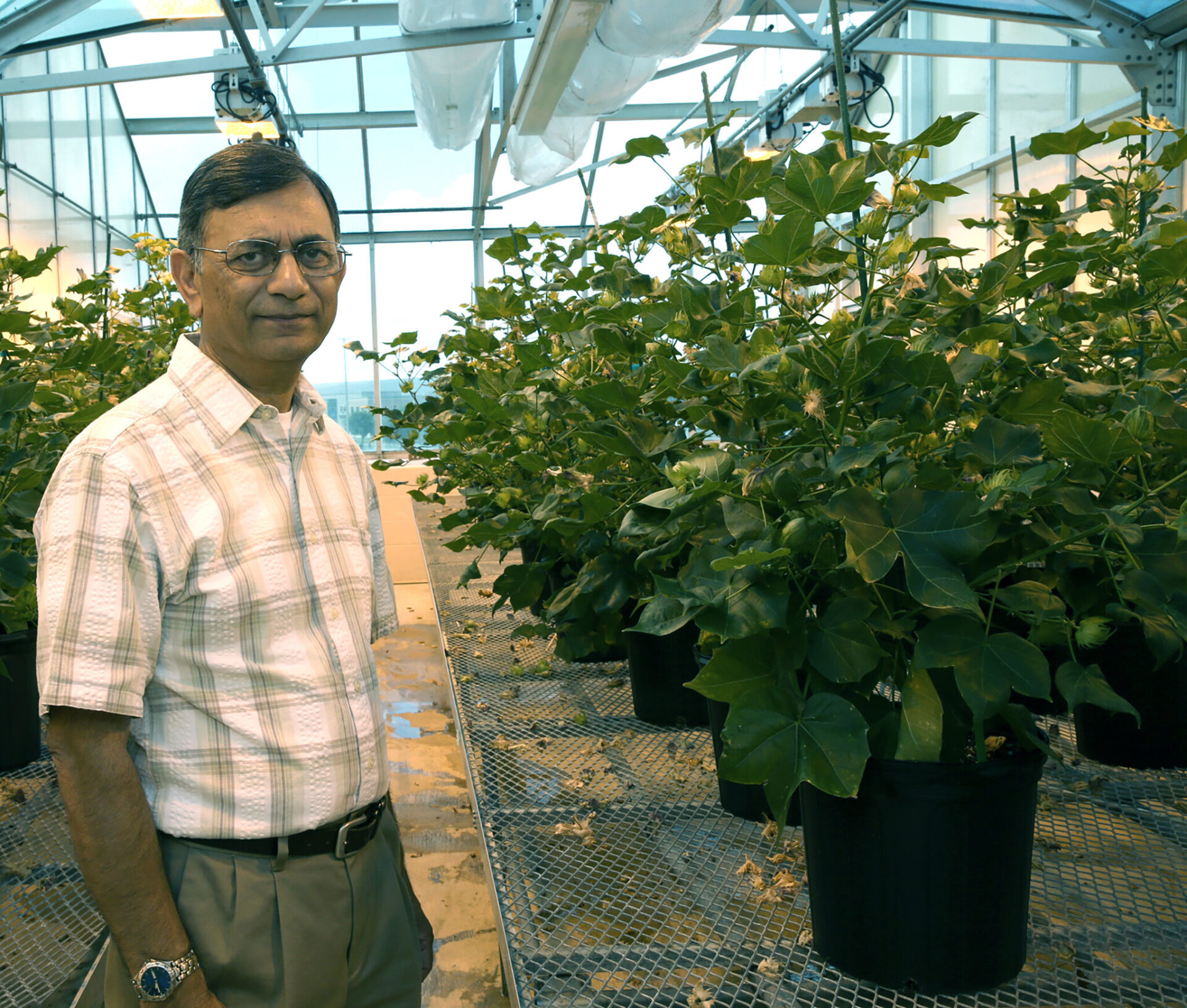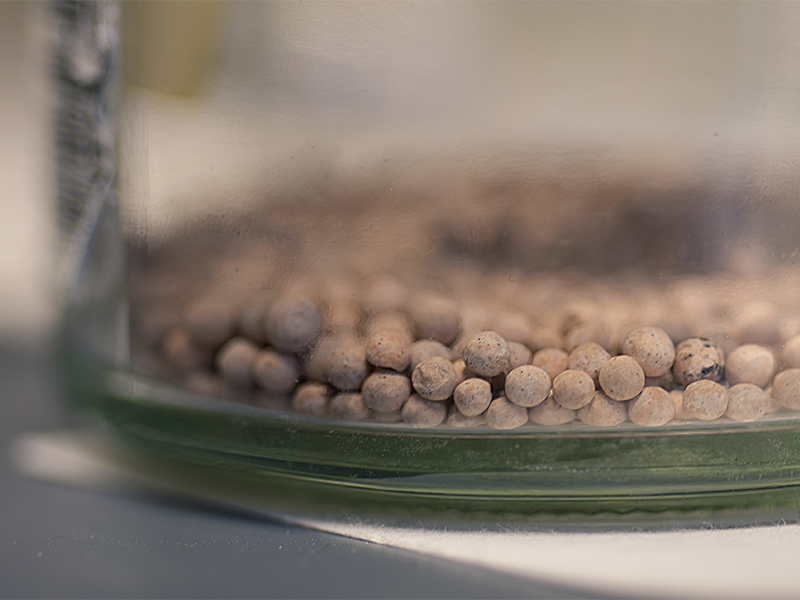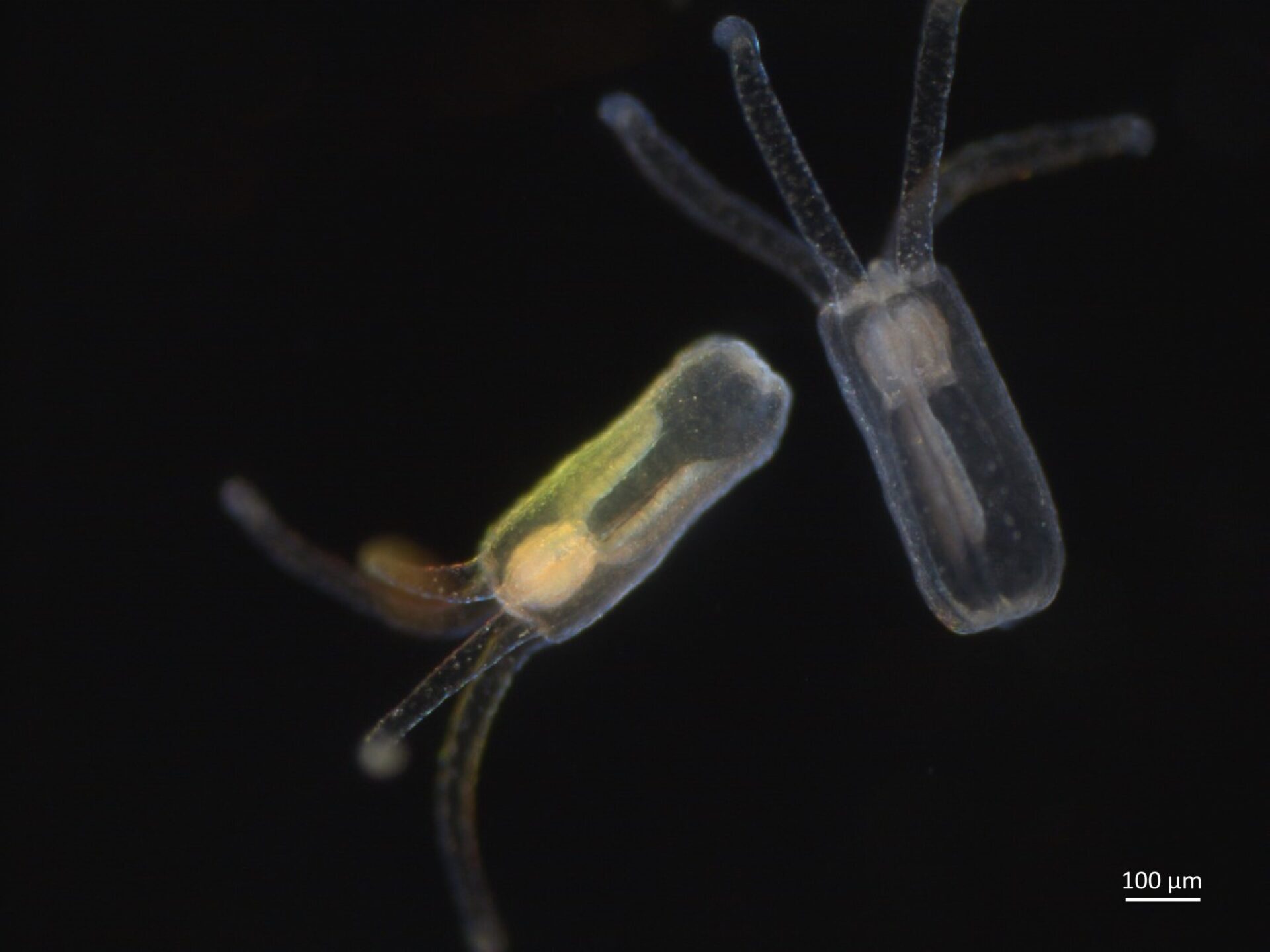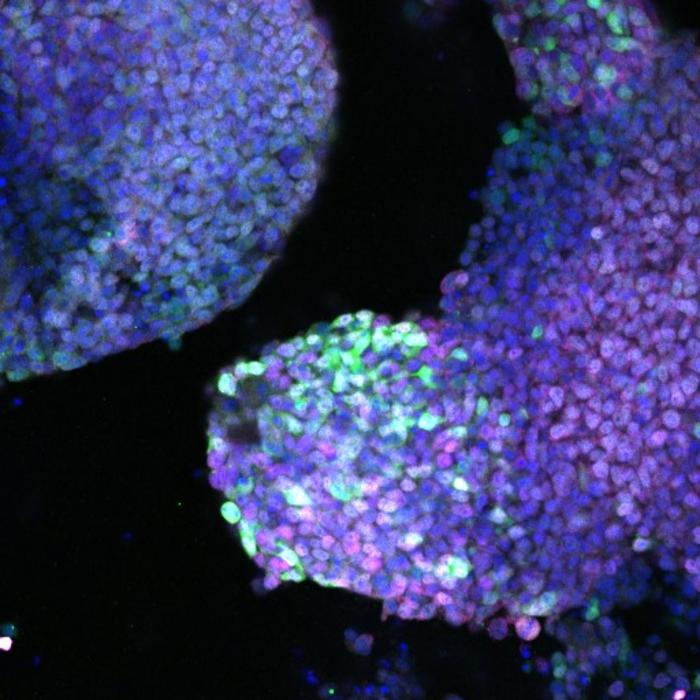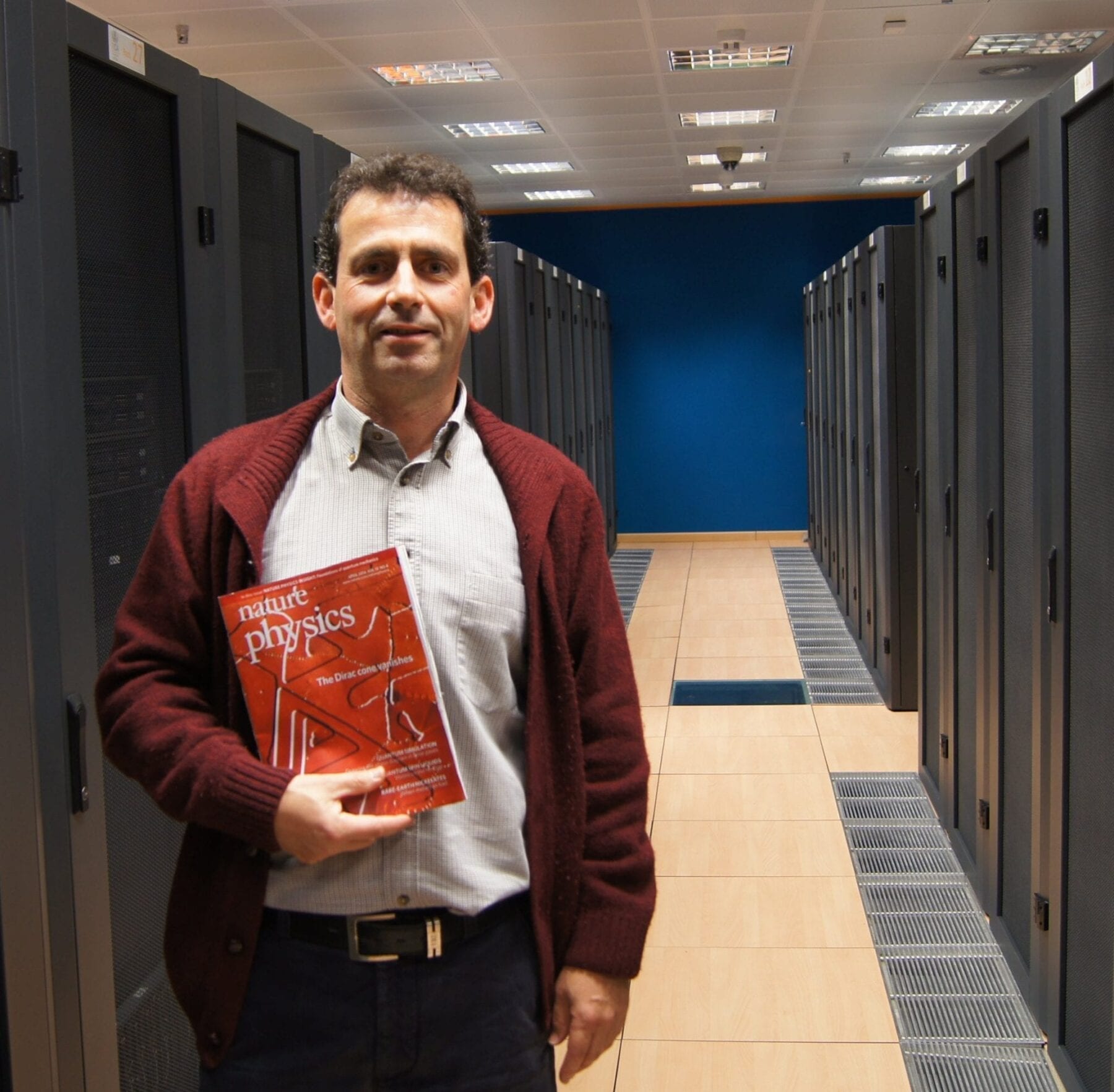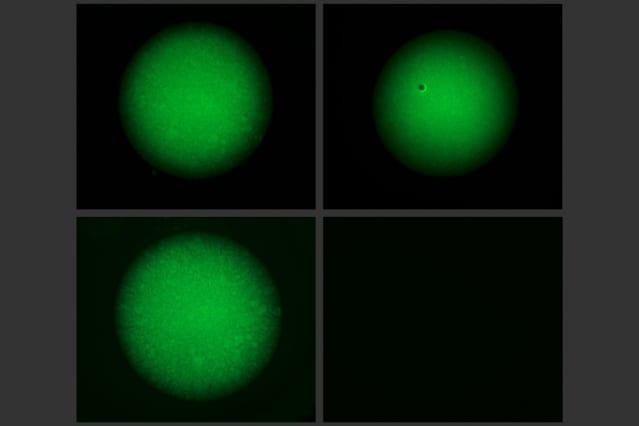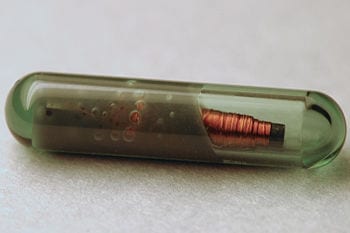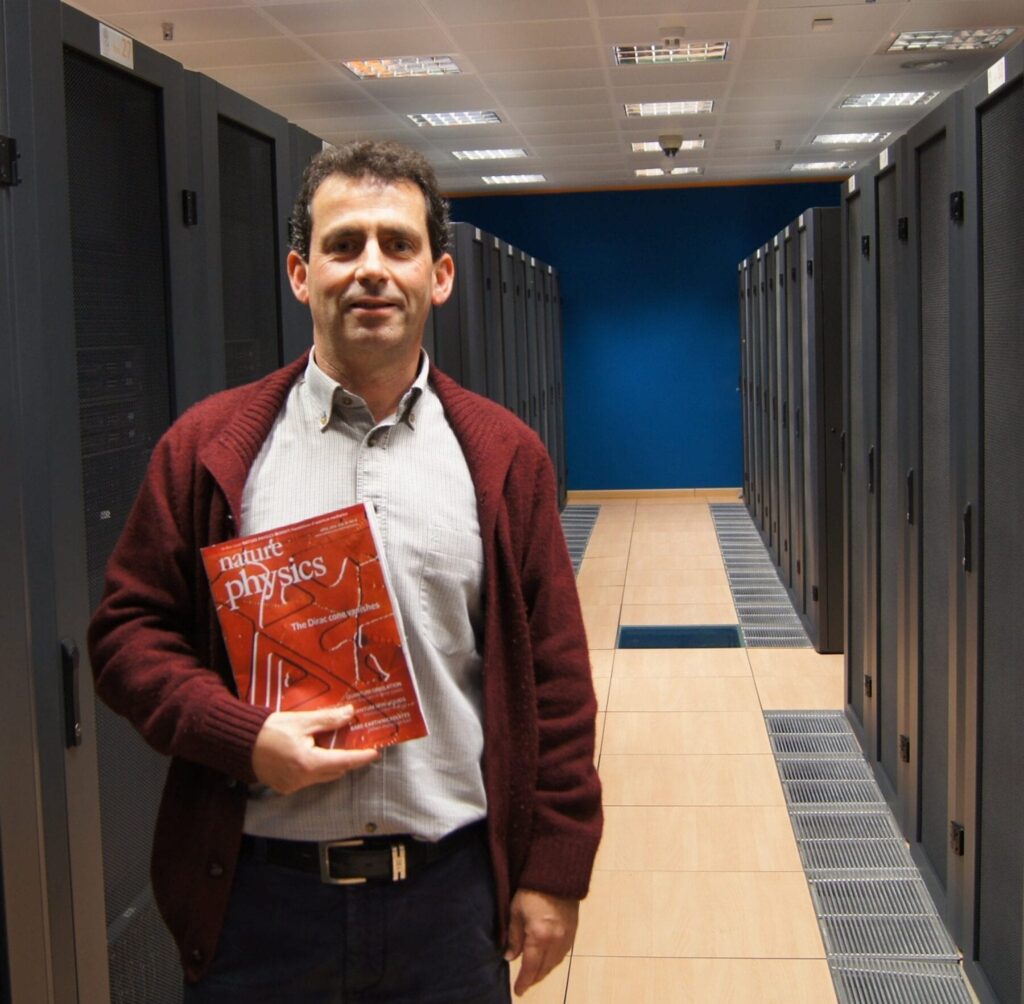
Allowing electrons to flow at speeds near to light speed with a practically non-existent energy consumption level
In the month of April 2014, a project in which Pedro L. Galindo, University Professor and member of the Computer Engineering Department of the University of Cadiz (UCA), has participated in has been featured on the cover of the magazine Nature Physics, the well-known international physics magazine. In this project, the discovery made by the co-authors of the project is explained: how to modify in a controlled way the behaviour of a family of revolutionary materials known as topological insulators.These materials are destined to become the forerunners of a new generation of microprocessors with high performance and low energy consumption which will revolutionize the computer, mobile phone, telecommunication and car industries, etc. Remember that nowadays, any industrial, domestic or energy consuming device has a microprocessor incorporated.
In 2007, a new family of materials was discovered in experiments: topological insulators. Since then, a large number of researchers have centred their work on them. These peculiar materials behave in a strange way as they are insulators on the inside but behave like conductive metals on the surface. That is to say, the material behaves like a relatively thick layer of plastic that separates two extremely thin layers of conductive material, with the difference that the whole thing is made of one and the same material: it simply behaves in this way. When this material is only a few atoms thick its surface can conduct electricity with an efficiency of almost 100%.
Under the title “Tuning Dirac states by strain in the topological insulator Bi2Se3”, the project has been carried out over the last few years in collaboration with researchers from the University of Wisconsin (USA) and the University of York (UK). Through this project, it has been demonstrated both theoretically (with DFT simulations) and experimentally (using advanced techniques for determining the distortion from electronic microscope images), that the behaviour of a topological insulating material (Bi2Se3) is proportionally correlated to its distortion. This fact opens the doors to the possibility of using distortion to develop devices whose behaviour can be modified in a controlled way. In this way, for example, the piezoelectric effect could be used and by applying electricity to a crystal, distort it and thereby control the topological insulator dynamically.
Dr. Pedro L. Galindo’s work is the fruit of many years of work at the heart of his research group and focusses on calculating the structural distortion in high resolution images from electronic microscopes. His software for calculating distortion is called Peak Pairs Analysis (PPA), the fundaments of which were published in the magazine Ultramicroscopy, and which has been distributed by the Japanese company HREM Research Inc. (world leaders in software applied to electronic microscopes) since 2009 from their headquarters in Tokyo, via a Temporary Licence Agreement from the UCA. The income from the royalties of this software are the largest source of the UCA’s income from this concept. Over the last few years, the software has been purchased by businesses, research centres and universities of important standing such as SAMSUNG, TOSHIBA, FEI, JEOL, U.S. Air Force, Sandia Labs., Oak Ridge Natl. Lab, Los Alamos Labs., Max-Planck Institute, TU Wien, KBSI Korea, ITRI Taiwan, Osaka Univ., and Beijing Univ. of Technology, among others.
For the development and improvement of this aforementioned software, the UCA’s supercomputer has been used (http://supercomputacion.uca.es), a machine which was financed by European Regional Development Funds (ERDF) in two stages, for a total of nearly a million Euros, and the application, design and implantation of which was led by Pedro L. Galindo and carried out in collaboration with other research groups at the UCA (Dr. Rafael García Roja) and personnel from the central computer service (Abelardo Belaústegui and Gerardo Aburruzaga). This machine, one of the most powerful in Andalusia, is currently in the service of the UCA’s research community.
It is important to emphasize that this project, published in Nature Physics, has as its final objective the manufacturing of real devices of exceptional characteristics. For example, topological insulating materials could be used to wire the components of a microprocessor, allowing the electrons to flow at speeds near to light speed, with a practically non-existent energy consumption, thereby reducing the generation of heat which would allow the calculation speed to be increased enormously.
The Latest on: Topological insulators
[google_news title=”” keyword=”Topological insulators” num_posts=”10″ blurb_length=”0″ show_thumb=”left”]
via Google News
The Latest on: Topological insulators
- Mechanical strain control of quantum transport in graphene enables new class of nanoelectronic deviceson April 23, 2024 at 5:00 pm
For example, uniaxial strain could be used to induce a transition from a normal insulator to a topological quantum spin Hall insulator in certain two-dimensional crystals. Applying strain to ...
- Tunable quantum anomalous Hall effects in van der Waals heterostructureson April 23, 2024 at 1:01 am
The quantum anomalous Hall effect (QAHE) has unique advantages in topotronic applications, but realizing the QAHE with tunable magnetic and topological properties for building functional devices is ...
- Magnetic Control Achieved Over Superconductor Properties: A Scientific Breakthroughon April 20, 2024 at 8:35 am
Innovations in superconductivity are pushing the boundaries of modern technology. While a significant focus lies on enabling currents with zero resistance at higher temperatures, the ability to ...
- Physicists Created an Exotic Superconductor Controlled by Magnetismon April 19, 2024 at 4:29 pm
While the FFLO state has been observed in superconducting materials as a bulk property, confining it to a Josephson junction in such a way that it can be controlled allows physicists to study the ...
- Researchers discover dual topological phases in an intrinsic monolayer crystalon April 17, 2024 at 10:08 am
An international team working with single-atom thick crystals found TaIrTe4's transition between the two distinct topological states of insulation and conduction. The material exhibited zero ...
- Enhancing the Performance of Quantum Resistance Standardson April 16, 2024 at 11:09 am
Researchers have developed a new method to enhance quantum resistance standards, leveraging the Quantum Anomalous Hall effect.
- Quantum precision: A new kind of resistoron April 16, 2024 at 5:41 am
Researchers have developed a method that can improve the performance of quantum resistance standards. It's based on a quantum phenomenon called Quantum Anomalous Hall effect.
- Beyond Theory: Dual Topological Insulating States Found in Monolayer Materialon April 10, 2024 at 10:14 pm
Scientists at Boston College have identified a material known as a dual quantum spin Hall insulator, which offers a promising foundation for investigating exotic quantum phases and electromagnetism. A ...
- Physicists discover a novel quantum state in an elemental solidon April 10, 2024 at 8:44 am
For more than a decade, scientists have used bismuth (Bi)-based topological insulators to demonstrate and explore exotic quantum effects in bulk solids mostly by manufacturing compound materials, like ...
via Bing News

